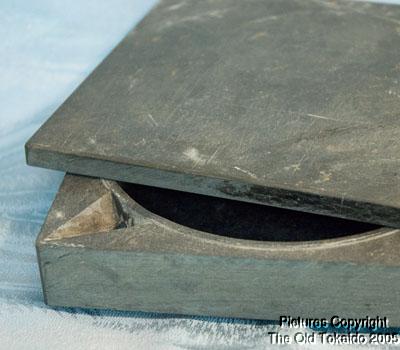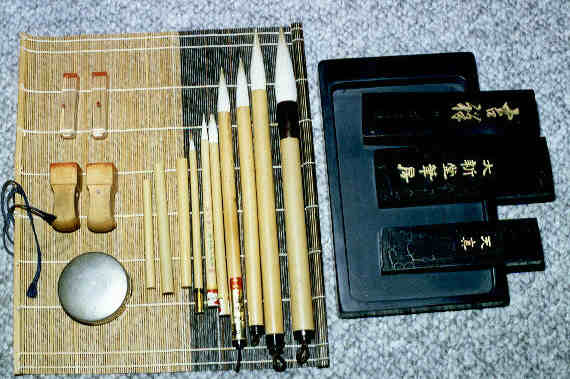Chinese Calligraphy Introduction
Chinese calligraphy (Brush calligraphy) is an art unique
to Asian cultures. Shu (calligraphy), Hua (painting), Qin
(a string musical instrument), and Qi (a strategic boardgame)
are the four basic skills and disciplines of the Chinese literati.

Regarded as the most abstract and sublime form of art in
Chinese culture, "Shu Fa" (calligraphy) is often
thought to be most revealing of one's personality. During
the imperial era, calligraphy was used as an important criterion
for selection of executives to the Imperial court. Unlike
other visual art techniques, all calligraphy strokes are permanent
and incorrigible, demanding careful planning and confident
execution. Such are the skills required for an administrator
/ executive. While one has to conform to the defined structure
of words, the expression can be extremely creative. To exercise
humanistic imagination and touch under the faceless laws and
regulations is also a virtue well appreciated.

By controlling the concentration of ink, the thickness and
adsorptivity of the paper, and the flexibility of the brush,
the artist is free to produce an infinite variety of styles
and forms. In contrast to western calligraphy, diffusing ink
blots and dry brush strokes are viewed as a natural impromptu
expression rather than a fault. While western calligraphy
often pursue font-like uniformity, homogeneity of characters
in one size is only a craft. To the artist, calligraphy is
a mental exercise that coordinates the mind and the body to
choose the best styling in expressing the content of the passage.
It is a most relaxing yet highly disciplined exercise indeed
for one's physical and spiritual well being. Historically,
many calligraphy artists were well-known for their longevity.
Brush calligraphy is not only loved and practiced by Chinese.
Koreans and Japanese equally adore calligraphy as an important
treasure of their heritage. Many Japanese schools still have
the tradition of having a student contest of writing big characters
during beginning of a new school year. A biannual gathering
commemorating the Lanting Xu by Wang Xi Zhi (The most famous
Chinese calligrapher in Jin dynasty, ) is said to be held
ceremonially in Japan. There is a national award of Wang Xi
Zhi prize for the best calligraphy artist. Not too long ago,
Korean government officials were required to excel in calligraphy.
The office of Okinawa governor still displays a large screen
of Chinese calligraphy as a dominating decor. |

